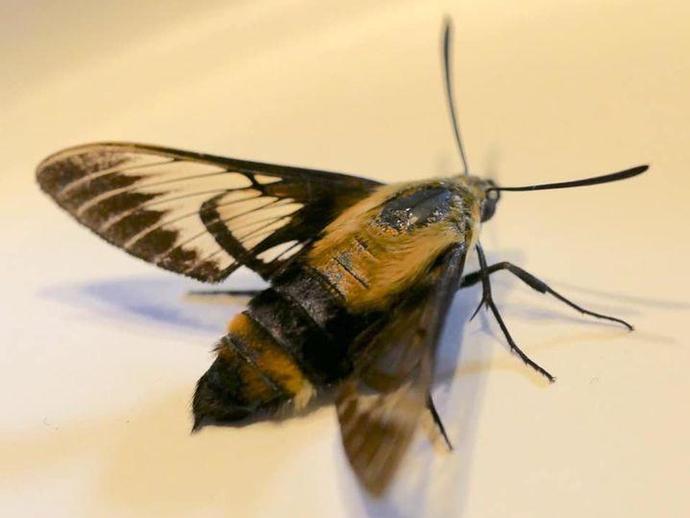November 26, 2021
Ben is taking a well-deserved vacation the rest of this week, so we're reaching into the archives for today's #BenInNature update presented by our friends at Carter Bank & Trust! The following post (slightly edited) was originally published on September 2, 2020.
Have you ever been in your garden and seen something that looks like a small, unusual hummingbird flitting from flower to flower? There's a good chance you spotted a hummingbird moth!
This particular hummingbird moth is a snowberry clearwing (Hemaris diffinis). Depending on your region, these are also called "flying lobsters" due to the unusual fan-shape at the end of the abdomen. They can be found in scattered locations throughout much of the U.S. and many parts of Canada, and unlike many moths, they are active during the day!
You'll notice that rather than having powdery scales covering their wings like most moths, these moths have transparent wings. When they first emerge as adults, their wings actually do have scales on them, but the rapid beating of their wings knocks the scales off over time! These moths are pretty speedy. While actual hummingbirds flap their wings at about 50 beats per second, some species of hummingbird moth top out at 85 beats per second!
These moths generally have two generations per year in the southern part of their range and can commonly be spotted from March through August. If you would like to attract these fascinating critters to your home, there are several different plants that will help. The caterpillars eat snowberry, honeysuckle, and dogbane, and the adults drink nectar from a wide variety of plants, including bee balm, phlox, verbena, and honeysuckle.
Thank you to VMNH Associate Curator of Recent Invertebrates Dr. Kal Ivanov for identifying this one for me!
ABOUT #BenInNature
Social distancing can be difficult, but it presents a great opportunity to become reacquainted with nature. In this series of posts, Administrator of Science Ben Williams ventures outdoors to record a snapshot of the unique sights that can be found in the natural world. New updates are posted Monday - Friday, with previous posts highlighted on the weekends. This series of posts is made possible thanks to the support of VMNH Corporate Partner Carter Bank & Trust (www.cbtcares.com).
NATURE PHOTO IDENTIFICATIONS
If you discover something in nature that you would like help identifying, be sure to message us right here on Facebook with a picture (please include location and date of picture) and we'll have our experts help you identify it!

 Hours & Admissions
Hours & Admissions Directions
Directions

